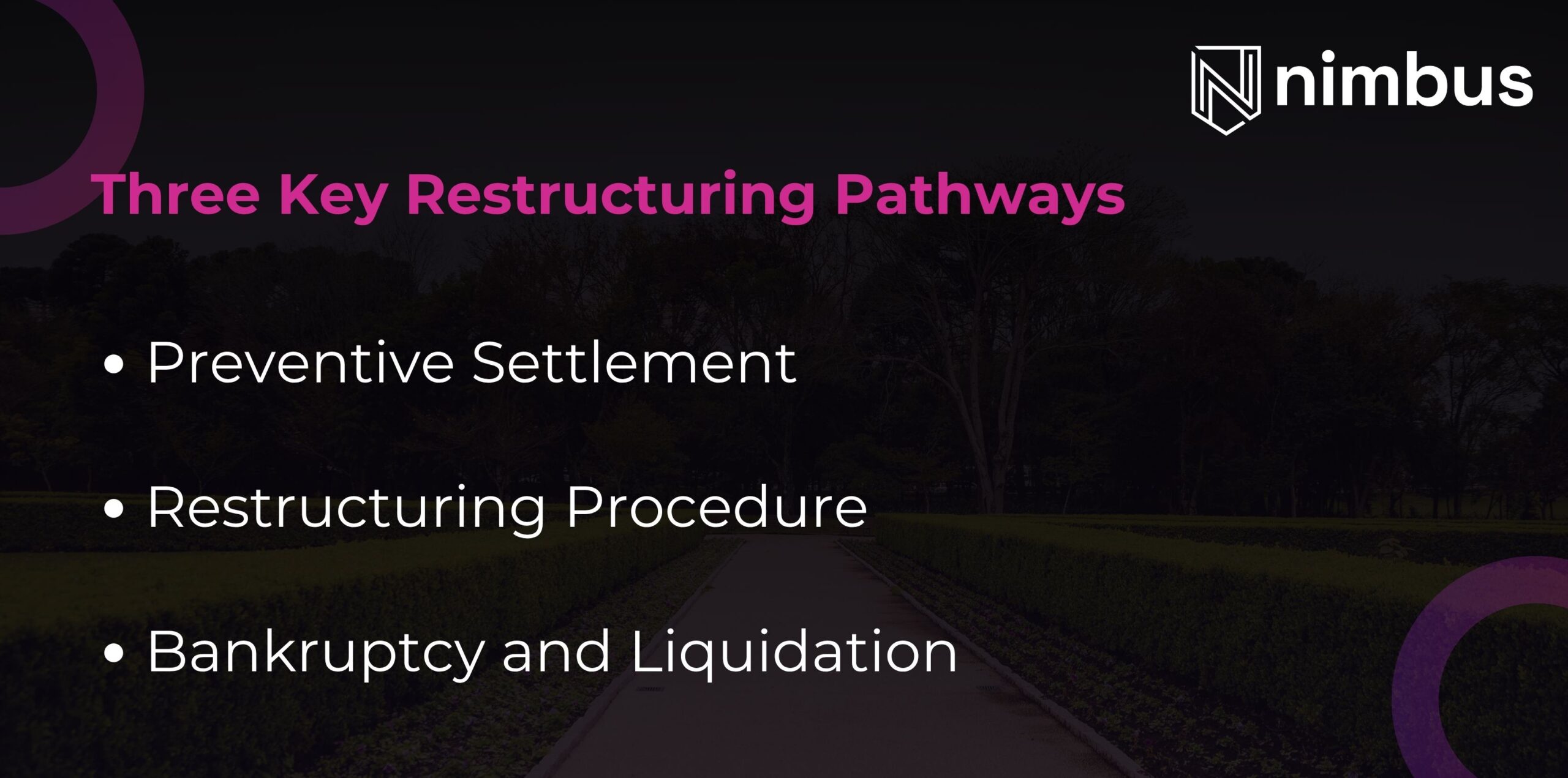The UAE has taken a major step forward in creating a more resilient and investor-friendly business environment with the introduction of the Financial Restructuring and Bankruptcy Law (Federal Decree-Law No. 51 of 2023).
The law, which became effective from May 1, 2024, replaced the 2016 Bankruptcy Law and laid the groundwork for a more transparent, efficient, and internationally aligned restructuring framework.
For investors exploring business setup in the UAE, this law is a welcome sign of regulatory maturity. It gives struggling businesses structured pathways to recover, while ensuring creditor confidence and market stability.
Restructuring Process in the UAE – What Investors Should Know in 2025

1. Why the New Restructuring Law Matters?
Corporate distress can happen to even the most successful companies, especially in rapidly evolving markets like the UAE. The new law reflects the government’s understanding that bankruptcy should not always mean failure. It can also be a chance for renewal.
By introducing specialized bankruptcy courts, clear creditor protections, and modern “cram-down” mechanisms, the UAE aligns its restructuring system with leading global jurisdictions such as the UK and Singapore.
This provides reassurance to both local and foreign investors that business setup services in the UAE are backed by a robust and fair legal framework.
2. Three Key Restructuring Pathways
The Financial Restructuring and Bankruptcy Law outlines three main procedures that companies can use, depending on the level of financial difficulty they face.

– Preventive Settlement
This option is designed for companies facing short-term financial challenges but remain fundamentally solvent.
- Only the debtor can initiate this process.
- Management continues to control daily operations, under court supervision.
- There is a three-month moratorium on creditor claims, extendable to six months.
- A court-appointed trustee is optional unless required.
This procedure replaces the previous “preventive composition” model and allows companies to reorganize their finances without being forced into liquidation.
– Restructuring Procedure
This mechanism caters to companies with more complex or multi-creditor situations. It provides a detailed process for court-supervised restructuring. Key features include:
- Automatic suspension of all creditor actions (moratorium) during proceedings.
- Appointment of a trustee to manage operations and oversee negotiations.
- Use of a cram-down mechanism, where a restructuring plan can be approved even if some creditors object, provided fairness criteria are met.
- Authority to modify contracts, dispose of assets, or secure new financing under judicial supervision.
This pathway helps businesses reorganize comprehensively, while giving creditors a higher level of transparency and assurance.
– Bankruptcy and Liquidation
If restructuring is no longer viable, the company may proceed to bankruptcy.
- The court declares bankruptcy and appoints a trustee to manage the liquidation process.
- The trustee assumes full operational authority and ensures fair asset distribution among creditors.
- The process ensures equitable treatment and final closure for all stakeholders involved.
3. Stronger Protections and Oversight
A central feature of the new law is the automatic moratorium, which pauses all enforcement and judicial actions against the debtor once proceedings begin. Unlike the previous 14-month cap, the new moratorium lasts until the restructuring or settlement plan is completed or terminated.
Additionally, the law introduces specialized bankruptcy courts, both federal and local, to handle all financial restructuring cases. These courts have exclusive authority to:
- Approve or reject restructuring plans.
- Supervise trustees.
- Enforce moratoriums.
- Issue binding orders to ensure smooth execution of restructuring procedures.
4. Trustee Powers and Responsibilities
Under the 2024 law, trustees play a central role similar to a company’s executive team. They can:
- Manage and safeguard company assets.
- Oversee the restructuring plan.
- Maintain updated records of creditors and liabilities.
- Communicate with regulators and other authorities.
Trustees must authorize specific transactions before execution, such as early debt repayments, asset transfers outside normal operations, and settlement of ongoing litigation, to prevent misuse of company assets during distress.
5. Cram-Down Mechanism: Ensuring Fair Outcomes
The cram-down provision allows courts to approve restructuring plans even if not all creditors agree, provided that dissenting creditors are not worse off than they would be under liquidation. This brings the UAE closer to global best practices by enabling pragmatic resolutions that avoid deadlocks while maintaining fairness.
6. Simplified Creditor Voting Rules
The voting framework has been simplified to emphasize the value of debt rather than the number of creditors.
- Preventive Settlement: Two-thirds approval by value of creditors present, covering at least half of total debt.
- Restructuring: Two-thirds approval by value of verified claims.
- Secured creditors can vote if their rights are directly affected.
7. Minimum Debt Levels and Application Process
The law clearly defines minimum debt thresholds for initiating proceedings:
- AED 300,000 for individuals
- AED 500,000 for corporate entities
- AED 5,000,000 for regulated entities
- AED 1,000,000 for creditors (general)
- AED 10,000,000 for creditors (regulated)
Applications can be initiated by the debtor, creditor, or regulatory authority, depending on the case type.
8. Implications for Freezone and Mainland Companies
The new restructuring framework primarily applies to onshore companies, but extends to most freezone business setups, excluding DIFC and ADGM, which have their own insolvency systems based on common law.
For investors choosing between mainland business setup and UAE freezones, understanding which jurisdiction your business falls under is essential. Each framework has different restructuring, ownership, and enforcement rules.
9. Key Takeaways for Businesses and Investors
For debtors:
- Engage financial advisors early when cash flow challenges arise.
- Maintain transparent communication with creditors.
- Prepare viable business plans demonstrating recovery potential.
For creditors:
- Review intercreditor agreements to avoid conflicts.
- Conduct recovery analysis comparing restructuring vs. liquidation outcomes.
For foreign investors:
- Ensure contracts include restructuring clauses and standstill agreements.
- Seek legal guidance on cross-border recognition of UAE restructuring outcomes.
The 2024 Financial Restructuring and Bankruptcy Law represents a significant evolution in the UAE’s economic landscape. By offering clear restructuring paths and creditor protection, it strengthens the UAE’s reputation as one of the world’s most secure destinations for investment.
Whether you are going for UAE mainland setup or exploring opportunities in UAE free trade zones, understanding these restructuring processes can safeguard your investment and ensure long-term success.



